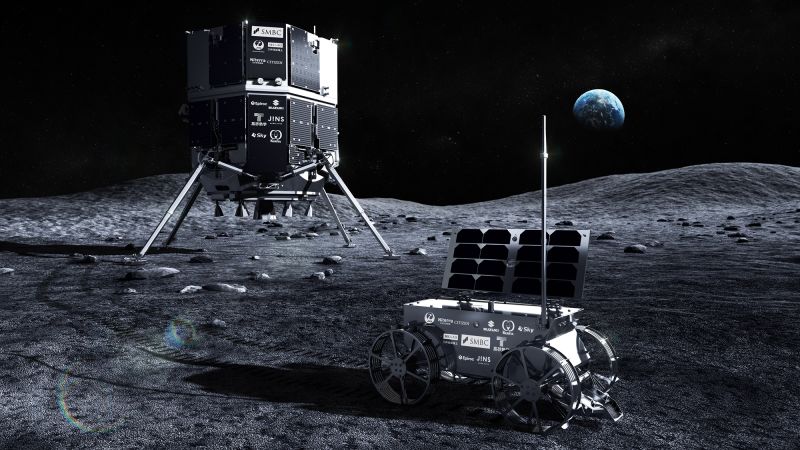In the realm of lunar exploration, significant advances have been made recently, particularly with the endeavors of private space companies. Nearly five months ago, a pivotal launch occurred from Florida, orchestrated by SpaceX, which carried two lunar landers to the Moon. Among them was the Blue Ghost spacecraft, designed by Firefly Aerospace, a Texas-based firm that made headlines when it became the first robotic commercial vehicle to land upright on the Moon’s surface in March. The success of the Blue Ghost has set the stage for other companies to follow suit, particularly the Japanese firm Ispace.
Ispace’s lunar lander, aptly named Resilience, is expected to arrive at its destination shortly, with a touchdown attempt anticipated at 3:24 p.m. ET on Thursday. This moment will mark a significant milestone for Ispace, as it comes three months after the Blue Ghost’s historic landing. Despite the competitive nature of such lunar missions, Ispace does not seem overly concerned with achieving a “first” landing. Instead, the company’s executives, including Chief Financial Officer Jumpei Nozaki, emphasize a strategy that prioritizes learning during the slow journey to the Moon. The extended trajectory of Resilience is branded as a “learning phase,” allowing the team to gather valuable insights into the challenges of deep-space travel.
The mission’s structure emphasizes a gradual approach, involving three teams of Ispace employees who have been meticulously training in the mission control room in Tokyo. This prolonged practice is designed to equip them with the skills necessary to handle the unpredictable dynamics of space travel, a unique opportunity highlighted by Ispace’s founder and CEO, Takeshi Hakamada. However, this strategy of slow-paced travel does not inherently guarantee success. In April 2023, Ispace suffered a setback when its initial attempt to place a spacecraft on the lunar surface resulted in a crash landing, bolstering the risks associated with their learning endeavor.
Resilience is traversing what is often termed a low-energy transfer trajectory. This method can be likened to biking to a friend’s house while coasting downhill to conserve energy. This slow and steady path allows the Resilience lander to travel vast distances into deep space, gradually getting captured by the Moon’s gravitational pull into orbit. In comparison, competitors like Firefly Aerospace’s Blue Ghost and the Nova-C lander, developed by Texas-based Intuitive Machines, opted for more direct paths. Such stark differences in approach reflect the diverse strategies within the burgeoning lunar exploration industry, with Ispace’s Resilience characterized by its lightweight design and relative cost-effectiveness, supplemented by a smaller rocket engine.
A protracted journey does provide opportunities for extensive testing and verification of the vehicle’s systems. Mission operators can evaluate a variety of systems during this long flight, including sensors and navigation systems. However, the downsides of such a method are noteworthy. As the Resilience mission progresses, Nozaki has indicated that the company will abandon its low-energy transfer approach in favor of more direct routes for future missions. Their next endeavor, named Apex 1.0 in collaboration with Draper, will pursue a path that aligns with the expectations of clients seeking prompt lunar access, which is especially critical given the fragile nature of scientific instruments that may be exposed to harsh space environments for extended periods.
Looking ahead, Ispace remains optimistic about the scientific instruments aboard Resilience, which include modules for testing algae-based food production, monitoring deep-space radiation, and conducting a water electrolyzer experiment. In terms of landing strategy, the company shifted from the Atlas crater, where its first lander crashed, to a flatter expanse known as Mare Frigoris or the “Sea of Cold.” The choice of this new landing site is characterized by its flexibility, likely enhancing the chances of a safe touchdown.
The anticipation surrounding the upcoming landing is palpable, as successful landing by Resilience would mark a significant accomplishment for Ispace, establishing it as the first commercial company outside the US to achieve such a feat. If successful, Ispace would join Firefly in the roster of companies with a proven record of upright lunar landings. This success would also enhance Ispace’s position in the competitive landscape as it strives to make lunar exploration accessible and fruitful for research and commercial endeavors, fostering a new era of space exploration that extends far beyond Earth’s boundaries.



